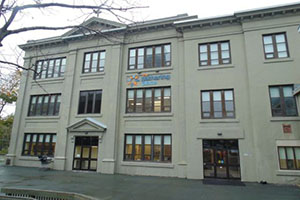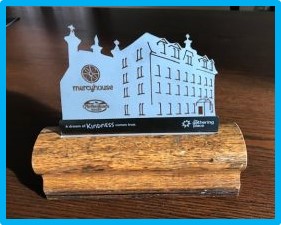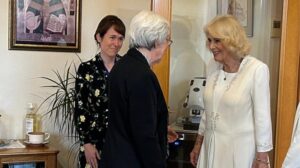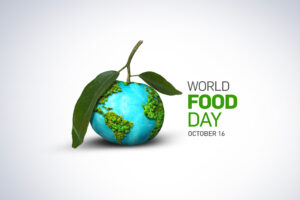
The Gathering Place is pleased to announce the appointment of Colin McNeil as Executive Director, effective January 5, 2026.
In this role, Colin will provide strategic and operational leadership to advance the organization’s mission of offering barrier-free, street-level supports to marginalized individuals. He will oversee programs and services, strengthen partnerships, steward financial resources, and champion the values that define The Gathering Place—compassion, dignity, and community.
Colin joins The Gathering Place with more than 30 years of progressive leadership experience in public service, most recently as Deputy Chief of Police with the Royal Newfoundland Constabulary. His career has spanned frontline operations, emergency management, professional standards, and community engagement. Known for his calm leadership and collaborative approach, he has guided teams through complex challenges while fostering trust and connection across sectors.
“Colin’s leadership is rooted in service, compassion, and integrity. His deep understanding of community needs and his unwavering commitment to dignity and inclusion make him the right person to guide our mission forward,” said Sister Elizabeth Davis, Chair of the Board of The Gathering Place. “We are confident that under his leadership, The Gathering Place will continue to be a place of hope, belonging, and inclusion for those who need it most.”
Reflecting on his appointment, Colin shared, “I am honored to join The Gathering Place, an organization that embodies compassion, respect, community—values that have guided my entire career. I look forward to working alongside the dedicated staff, volunteers and partners to ensure that every Guest feels seen, supported and empowered.”
The Gathering Place se complace en anunciar el nombramiento de Colin McNeil como director ejecutivo, con efecto a partir del 5 de enero de 2026.
 En este cargo, Colin proporcionará liderazgo estratégico y operativo para promover la misión de la organización de ofrecer apoyo sin barreras y a pie de calle a las personas marginadas. Supervisará los programas y servicios, reforzará las asociaciones, administrará los recursos financieros y defenderá los valores que definen a The Gathering Place: compasión, dignidad y comunidad.
En este cargo, Colin proporcionará liderazgo estratégico y operativo para promover la misión de la organización de ofrecer apoyo sin barreras y a pie de calle a las personas marginadas. Supervisará los programas y servicios, reforzará las asociaciones, administrará los recursos financieros y defenderá los valores que definen a The Gathering Place: compasión, dignidad y comunidad.
Colin se une a The Gathering Place con más de 30 años de experiencia en liderazgo progresivo en el servicio público, más recientemente como subjefe de policía de la Real Policía de Terranova. Su carrera abarca operaciones de primera línea, gestión de emergencias, normas profesionales y participación comunitaria. Conocido por su liderazgo tranquilo y su enfoque colaborativo, ha guiado a equipos a través de retos complejos, al tiempo que ha fomentado la confianza y la conexión entre los distintos sectores.
«El liderazgo de Colin se basa en el servicio, la compasión y la integridad. Su profundo conocimiento de las necesidades de la comunidad y su compromiso inquebrantable con la dignidad y la inclusión lo convierten en la persona adecuada para guiar nuestra misión», afirmó la hermana Elizabeth Davis, presidenta de la junta directiva de The Gathering Place. «Estamos seguros de que, bajo su liderazgo, The Gathering Place seguirá siendo un lugar de esperanza, pertenencia e inclusión para quienes más lo necesitan».
Reflexionando sobre su nombramiento, Colin compartió: «Es un honor para mí unirme a The Gathering Place, una organización que encarna la compasión, el respeto y la comunidad, valores que han guiado toda mi carrera. Estoy deseando trabajar junto al dedicado personal, los voluntarios y los socios para garantizar que todos los huéspedes se sientan vistos, apoyados y empoderados».



 Since Mercy House is in operation a year now, we were delighted to hear about its progress. Its main goals are to restore hope, independence and stability in people’s lives as they are treated with compassion, helped make connections and assisted in setting goals for themselves.
Since Mercy House is in operation a year now, we were delighted to hear about its progress. Its main goals are to restore hope, independence and stability in people’s lives as they are treated with compassion, helped make connections and assisted in setting goals for themselves. The encounter took place at the Pontifical Beda College following an ecumenical celebration at the Basilica of St Paul Outside the Walls, attended by King Charles III and Queen Camilla during their official visit to the Holy See…
The encounter took place at the Pontifical Beda College following an ecumenical celebration at the Basilica of St Paul Outside the Walls, attended by King Charles III and Queen Camilla during their official visit to the Holy See…
 The International Prayer for Peace
The International Prayer for Peace Following in the footsteps of his predecessors
Following in the footsteps of his predecessors